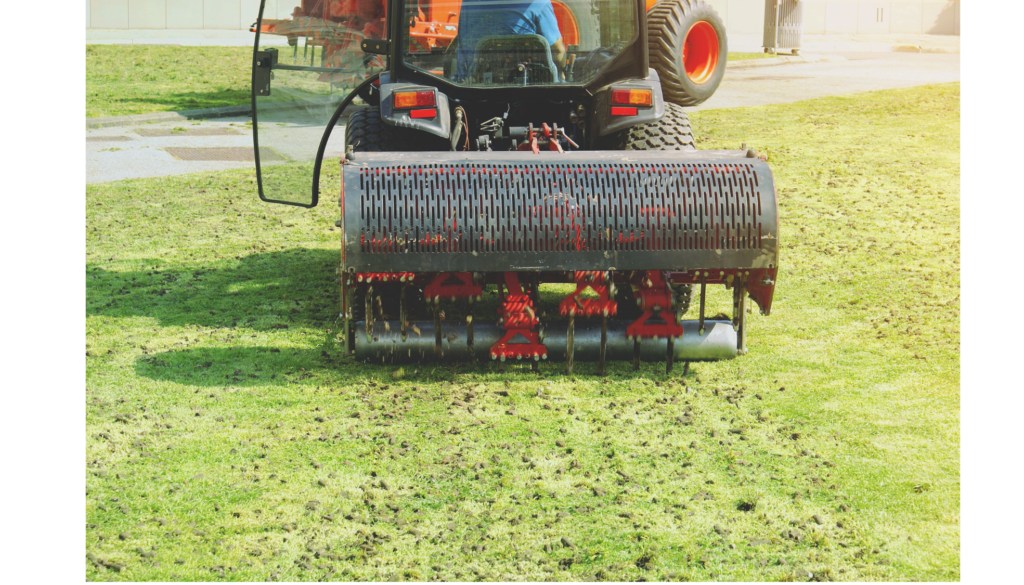
Lawn aeration, a crucial aspect of lawn care, helps maintain a healthy, lush green landscape. Understanding the technicalities of this process could be a game-changer for your lawn maintenance routine.
Table of Contents
Introduction to Lawn Aeration
Lawn aeration, in simple terms, involves creating small holes in the soil to allow air, water, and nutrients to penetrate the grassroots. This helps the roots grow deeply, resulting in a more vigorous lawn. However, the process isn’t as straightforward as it sounds.
The Science Behind Lawn Aeration
When it comes to aeration, there are two primary methods—mechanical core aeration and chemical aeration.
Mechanical core aeration is the more traditional method, where a machine is used to remove small soil plugs or “cores” from the lawn. This kind of aeration is best for lawns with heavy clay soil or significant thatch buildup.
On the other hand, chemical aeration is a less aggressive approach that uses liquid solutions to enhance soil structure and encourage deeper root growth. Though it doesn’t physically remove soil, it can effectively loosen compacted soil and improve its porosity.
When to Aerate Your Lawn
The timing of aeration depends largely on your geographical location and the type of grass you have. Typically, the best time to aerate is during the growing season when the grass can heal and fill in any open areas after soil plugs are removed.
- Northeast: For homes in the Northeast, aeration is typically done between late spring and early fall.
- Midwest: In the Midwest, late summer or early fall is generally the best time to aerate your lawn.
- Southern Illinois: Depending on the soil conditions and type of grass, spring and fall are the most preferred times to aerate in Southern Illinois.
Why Aerate Your Lawn
Aeration offers numerous benefits, including:
- Improved Air Exchange: It enhances the air exchange between the soil and the atmosphere.
- Enhanced Soil Water Uptake: Aeration improves water uptake by the soil.
- Reduced Water Runoff and Puddling: It reduces water runoff and puddling.
- Stronger Turfgrass Roots: Aeration leads to stronger turfgrass roots.
- Reduced Soil Compaction: It helps in reducing soil compaction.
- Enhanced Heat and Drought Stress Tolerance: Aeration improves heat and drought stress tolerance.
- Improved Resilience and Cushioning: It improves the resilience and cushioning of the lawn.
- Enhanced Thatch Breakdown: Aeration assists in thatch breakdown.
How to Aerate Your Lawn
The process of aeration involves the following steps:
- Moisten the Lawn: Water your lawn thoroughly one to two days before aerating. This helps the aerator penetrate the soil more deeply. You could try mixing dish detergent in with the water to help soften the turf.
- Mark Sprinkler Heads: Clearly mark sprinkler heads and other hidden objects in your lawn to avoid damaging them during aeration.
- Aerate your Lawn: Run the aerator over your lawn, making multiple passes over areas that need it most.
- Leave the Soil Plugs: The extracted soil plugs should be left on the lawn to decompose and filter back into the holes left by the aeration process.
- Apply Fertilizer: After aeration, it’s a good time to fertilize your lawn and apply a top-dressing.
Post-Aeration Care
After aeration, continue basic lawn care practices such as proper fertilizing, mowing, and watering.
Overseeding After Aeration
Overseeding after aeration can help thicken your lawn and fill in bare spots. The best time to do this is right after you’ve finished aerating. The holes in the soil will provide the seeds with a protective, nurturing environment where they’ll have a better chance of germinating.
Mechanical vs. Chemical Aeration
While mechanical aeration physically removes plugs of soil and grass, chemical aeration uses a liquid to break apart compacted soil. Both methods have their pros and cons, and the choice between the two depends on the specific needs of your lawn.
Common Aeration Mistakes to Avoid
While aeration can provide significant benefits, it’s crucial to avoid common mistakes that could harm your lawn, such as:
- Aerating at the Wrong Time of Year: The timing of aeration is crucial to ensure your lawn recovers quickly.
- Not Watering After Aeration: After aeration, your lawn will need a good drink to recover from the stress of having holes poked in it.
- Not Aerating at All: If you’ve never aerated your lawn, it’s likely overdue.
Concluding Thoughts
Lawn aeration can seem like a daunting task, but with the right knowledge and tools, it’s a job that can easily be tackled. Whether your lawn’s soil is heavy and compacted, or if you’re simply looking to boost the overall health and appearance of your lawn, aeration can be of great benefit.
Want to leave it to the Pros? Click here and get an estimate today!